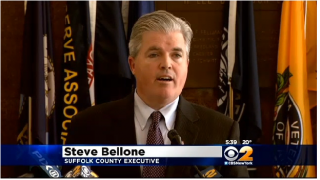In the wake of a new study on Long Island’s water pollution, Suffolk County Executive Steve Bellone says improving the water quality is his new No. 1 goal.
“I consider this issue the most important priority of my administration,” Bellone said during a news conference in Hauppauge Thursday.
According to the report, nitrogen levels in the Island’s ground and surface water have become so critically high that it is impacting drinking water, recreational waterways, and reducing wetlands. Wetlands act as Long Island’s last line of natural defense against disasters such as Superstorm Sandy.
Stony Brook professor Chris Gobler told 1010 WINS’ Mona Rivera that the new water study is alarming. “Certainly in our coastal waters too much nitrogen is leading to things like brown tides, red tides, loss of shellfish, loss of fisheries,” Gobler said.
While most of New York gets its tap water from upstate reservoirs, Long Island’s drinking water comes from fragile aquifers in the ground, CBS 2′s Jennifer McLogan reported.
As WCBS 880′s Sophia Hall reported, 70 percent of the houses in Suffolk County have cesspools, meaning they are not a part of the public sewer system.
“The primary cause for this significant decline in water quality is nitrogen. Primary source, but not the only source of nitrogen pollution, is failing septics and cesspools,” Bellone said.
Adrienne Esposito, of Citizens Campaign for the Environment, said the people most at risk to the effects of water pollution are those with private wells, Hall reported.
“I think for the people who have private wells, there is a very big concern about what’s in the water and what people are drinking and illnesses. For people who have water districts, their water is being monitored and filtered,” Esposito said.
“3 million people get their water from under their feet – not from a reservoir, not from any other source. So what goes into the ground, ends up in their water,” said Richard Amper, of the Long Island Pine Barrens Society.
The report said the health and safety of those not connected to public sewers could be threatened within a decade, McLogan reported.

